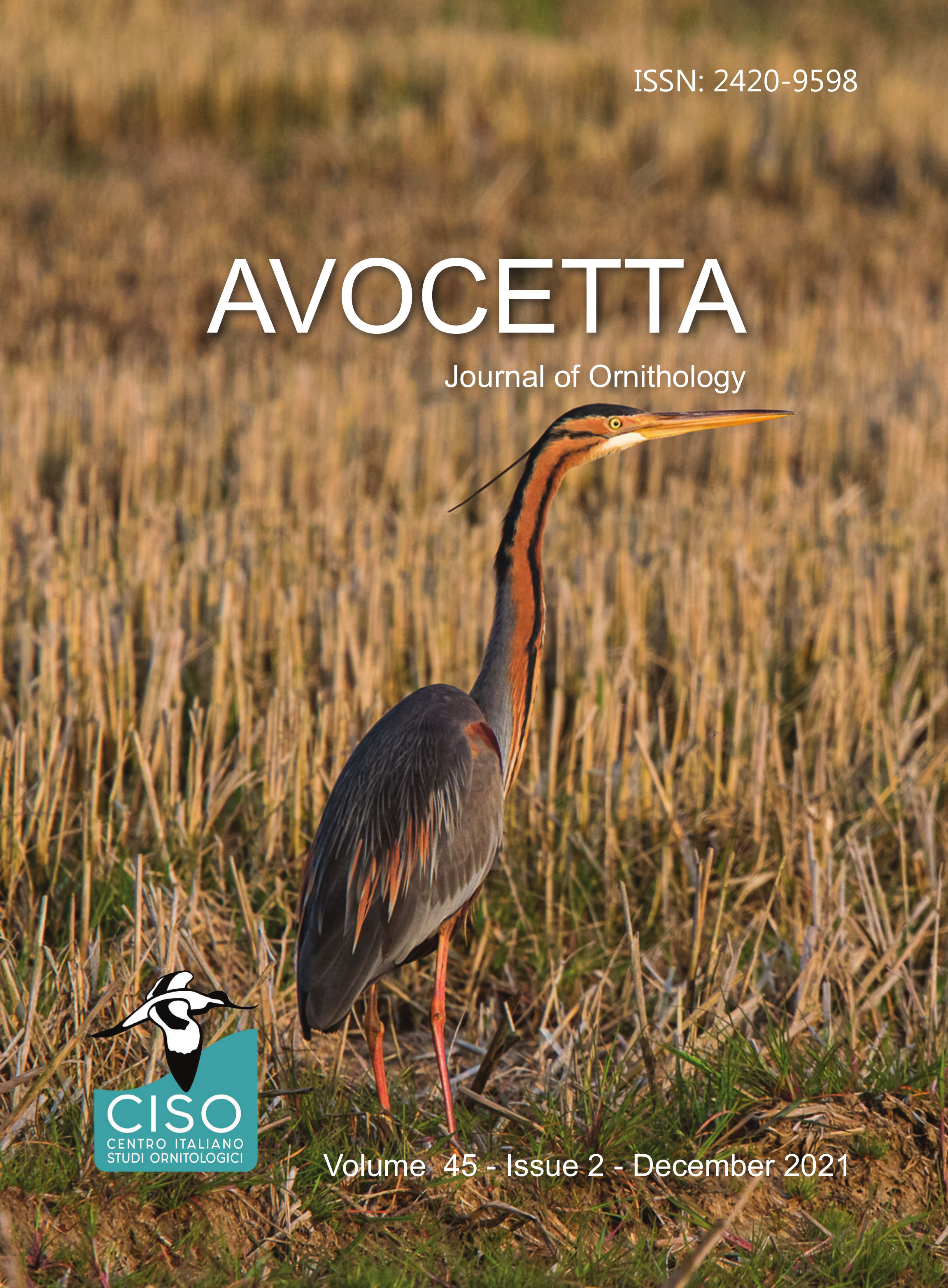
Volume 45 - N. 2
December 2021
Avocetta
Volume 45 - N. 2
Volume 45, Issue 2, December 2021(cover photo by A. Galimberti)
-
Editorial - Get your hands dirty and expose yourself!
Corrado Battisti
-
Post-fledging habitat selection of a Purple Heron Ardea purpurea revealed by GPS/GSM telemetry
Michelangelo Morganti, Enrico Viganò, Alessandro Berlusconi, Sara Cioccarelli
-
The response of bird communities to forest loss in the district Swat Khyber Pakhtunkhwa, Pakistan
Attah Ullah, Khurshaid Khan, Nehafta Bibi
-
Biometric characterization of the Red-legged Partridges Alectoris rufa of northwestern Italy
Fabrizio Silvano, Pier Giuseppe Meneguz, Paolo Tizzani, Irene Pellegrino, Alessandro Negri, Ennio Negri and Giovanni Boano
-
The effects of egg laying onset, nest size and egg size on the hatching success of the Little Grebe Tachybaptus ruficollis
Seyed Mehdi Amininasab, Seyed Masoud Hosseini-Moosavi, Mahdi Mardani and Charles C.Y. Xu
-
Short communication - The Alexandrine parakeet Psittacula eupatria as a naturalised breeding species in Italy: a proposal of integration to the national official checklist
Silvia Giuntini, Leonardo Ancillotto, Emiliano Mori and Andrea Viviano
-
Forum - Searching the effectiveness within conservation projects: Applying the Swiss Cheese Theory to the creation of a supplementary feeding station for the Black Kite Milvus migrans in central Italy
Jean-Philippe Audinet, Tommaso Baldrati, Patrizia Bonelli, Gino Cecilia, Umberto De Giacomo, Giuseppe Panuccio and Corrado Battisti
-
Bird News - December 2021
Gaia Bazzi (ed.)
-
Book Reviews - December 2021
Federico De Pascalis, Roberto Ambrosini, Michelangelo Morganti

